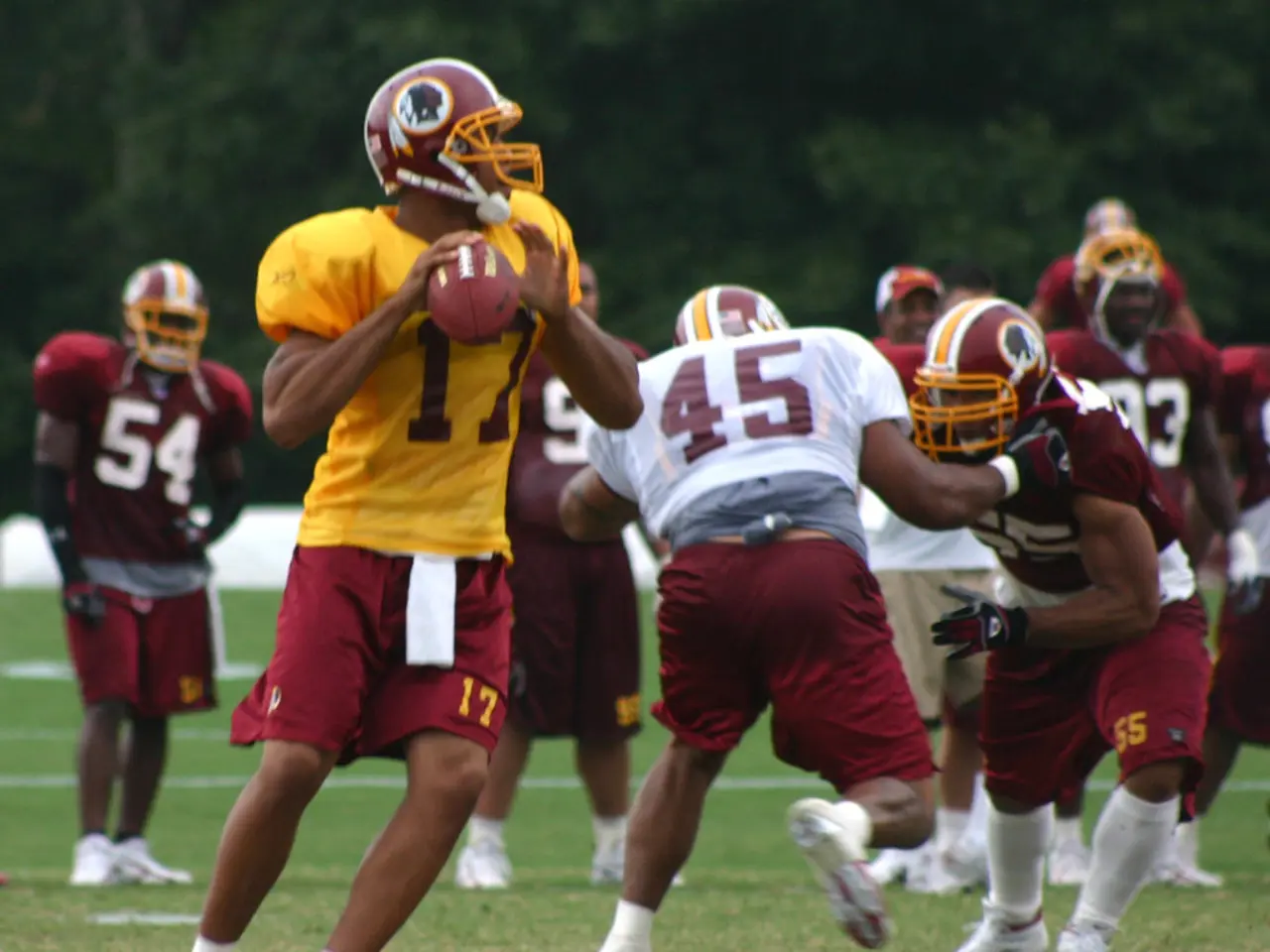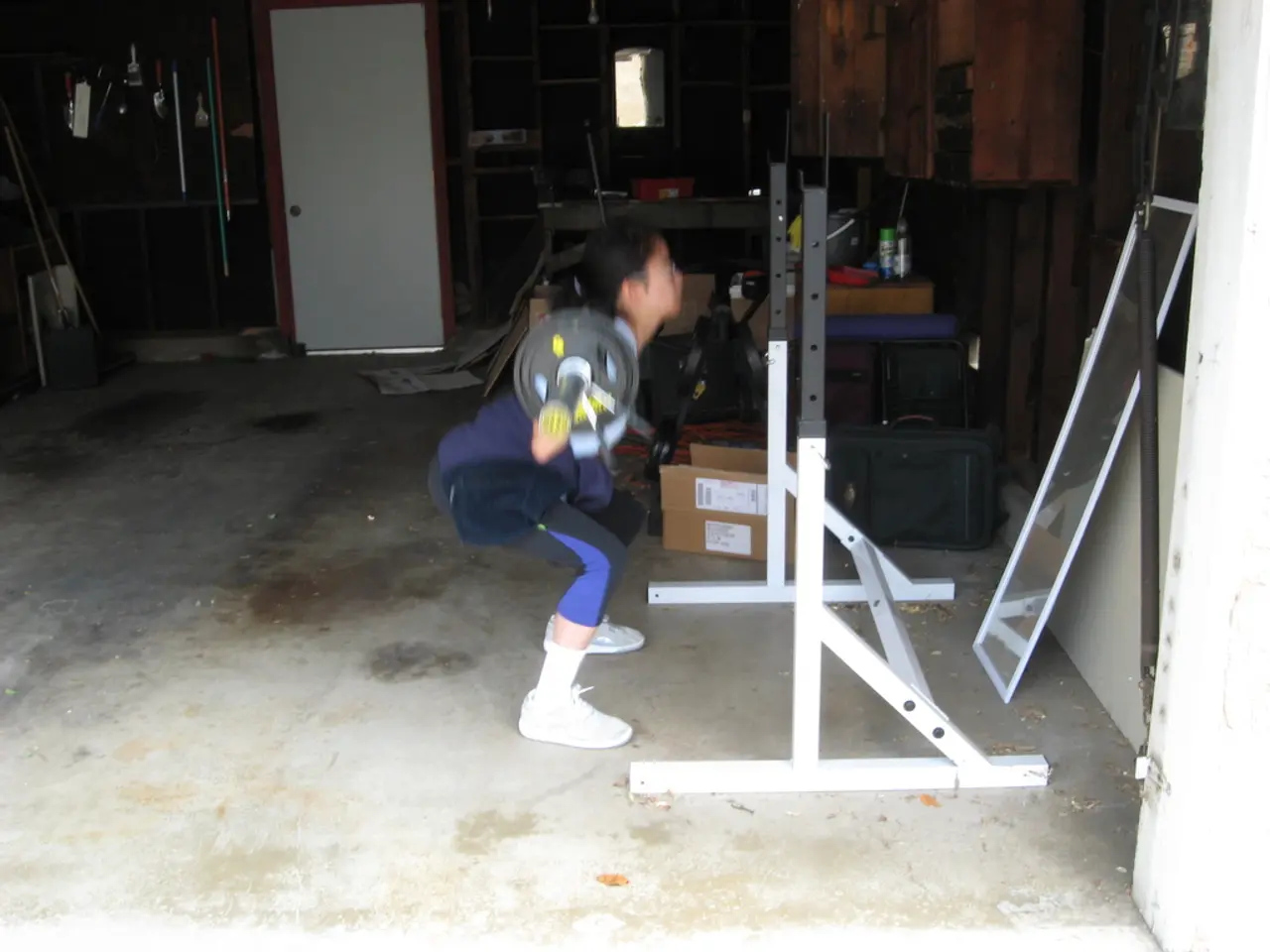The Fundamentals of American Football Explained
=====================================================================
American football, a beloved sport in the United States, is played on a rectangular field with specific dimensions and rules. Let's delve into the key features of an NFL football field and the fundamental rules that govern the game.
Field Dimensions
A professional American football field measures 120 yards long (100 yards of playing field plus two 10-yard end zones) and 53 1/3 yards (160 feet) wide. The field is marked with yard lines every 5 yards, with hash marks and goal lines clearly defined.
End Zones
At each end of the field, there are 10-yard-deep end zones, located behind the goal lines. These end zones are crucial as a team scores a touchdown when any part of the ball reaches the edge of the goal line, which is the one a team is advancing toward.
Gameplay Rules
The game is played in four 15-minute quarters, with an extended halftime break between quarters two and three. If the game is tied after four quarters, an additional 15-minute overtime period is played, with the first team to score winning the game.
Teams have four downs to advance the ball 10 yards. Points are scored via touchdowns (6 points), extra points or two-point conversions after touchdowns, field goals (3 points), and safeties (2 points).
Essential Equipment
The most essential piece of equipment in a football game is the ball, which is handmade by Wilson Sporting Goods Co. The football is an oblong sphere with a lengthwise circumference of about 28.5 inches (72.4 cm) and a width-wise circumference of about 21.5 inches (54.6 cm) in the middle, weighing between 14 and 15 ounces (397 - 425 grams).
The Roles on the Field
An NFL game consists of three teams: offense, defense, and the officiating crew. Each team has specialized positions with a specific set of skills. The referee is the head official on the field and is responsible for giving signals and serving as the final authority on rule interpretation. The side judge, field judge, and line judge make calls regarding the wide receivers, backs, tight ends, and players they might be blocking. The back judge is also responsible for keeping the time for the 25-second play clock, time-outs, and intermissions. The umpire rules on players' equipment and conduct.
Strategies and Penalties
The defensive team stops the offensive team from getting 10 yards in three downs, and the offensive team free-kicks, or punts, the ball to the other team on third down (punt). A team recovers a ball dropped by the other team (fumble) or picks off a ball thrown by the other team's quarterback (interception). Intentional grounding is when a quarterback, who is in the pocket, intentionally throws the ball away to avoid being tackled behind the line of scrimmage for a loss of yards.
In a modern NFL game, there are as many as 20 cameras covering the fast-paced action of a game. Each team is allotted two challenges per game. If the team loses the challenge, it loses a time-out and the official's call stands, according to NFL rules.
Intriguing Rules and Exceptions
The tuck rule is when a player, typically the quarterback, drops the ball when his arm is moving forward to tuck the ball away. The action is considered an incomplete pass rather than a fumble because his arm is moving forward. The "Emmitt Smith" helmet rule states that a player cannot remove his helmet on the field unless it is to adjust his equipment. A fair catch can be signaled by a player receiving a kick or punt putting his arm in the air. Once he signals for a fair catch, he cannot be tackled and cannot move beyond the spot where he catches the ball. The leaping rule states that while players can block kicks, they cannot run from more than 1 yard behind the line of scrimmage to do so.
When a play is challenged, the referee has 90 seconds to review the play. A team can choose to punt the ball in order to back the opposing team up so that it has to cover a greater distance to score. A player is tackled in his own end zone, meaning the end zone his team is defending, so the other team gets the ball though a free kick (safety).
In conclusion, American football is a captivating sport with its unique rules, strategies, and equipment. Understanding the basics of an NFL football field and gameplay rules adds to the enjoyment of this thrilling game.
A football, essential equipment in American football, is manufactured by Wilson Sporting Goods Co. with specific dimensions that make it an oblong sphere. American football is also played on a rectangular field, where a team scores a touchdown when any part of the ball reaches the edge of the goal line in the end zone.







